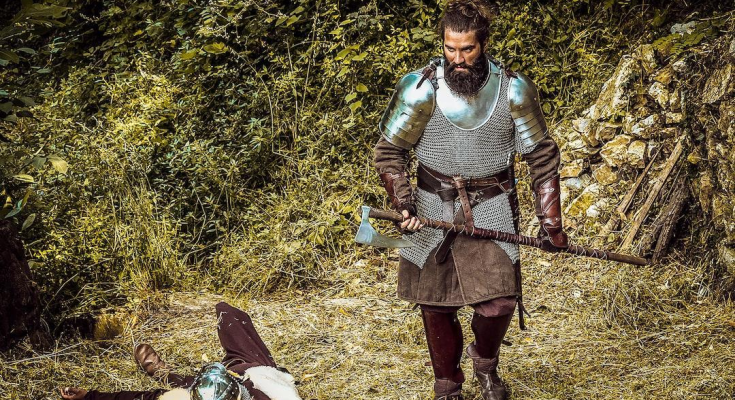Everyone expects to see a hoard of Vikings coming and going on their epic raids. There’s a reason they are consistently the primary antagonists in any movie.
Besides the grandeur of their mythos, they’re associated with ferocity. Their cloaks also lend an air of mystery.
The Viking cloak made raiding easier and more enjoyable. It was even a psychological tactic to confuse the enemy. Today, the cloak remains a classic piece of Viking clothing that still carries a certain prestige.
For the cloak-loving Viking, here’s the lowdown on Viking cloaks.
Historical Origins
A Viking cloak is a type of large, rectangular outerwear with a hood. These garments were worn by Vikings during the 9th to 11th centuries in Northern Europe.
Viking cloaks have enjoyed a resurgence of popularity in recent years. There has been an advent of historically inspired fashion. Its historical origins are something of a mystery.
We do know that they were used by the Norse and other Scandinavian people during the Middle Ages. They were most likely used as personal garments to keep warm in colder climates. Most types were usually made of wool, and the primary feature was a hood.
Typically, they were lined with fur, which added warmth and served to protect the wearer from rain. It was also used to cover the armor and shield when in battle. Other materials may have been used, such as linen and other fabrics or leather.
Visual Representation
Viking cloaks had a wide range of uses. One of those is providing warmth and being a symbol of status. Their visual representations can be seen in historical images, where they are shown as heavy, wrap-around garments. It also has a distinctive hood and fastening belt.
Today, they have become popular with those who participate in historical reenactments. It is because they evoke the sense of a bygone era.
They are also used as ceremonial items in some religious ceremonies. They are a firm favorite at festivals and LARP events. Viking cloaks can be enjoyed for both practical and aesthetic reasons, making them a great addition to any wardrobe.
Traditional Materials Used
Wool was used for cloaks in cold climates due to its excellent insulation properties. Linen, on the other hand, was used for cloak-wear in warmer climates.
Both materials were breathable and lightweight. It allows the wearer to remain comfortable in any weather.
Along with wool and linen, other materials used included animal hides and furs. These were excellent for warmth and protection from the elements. They also used bright colors.
They have intricate designs to decorate for special ceremonies and events. They included embroidered images of figures from Nordic mythology, as well as patterns from nature such as trees and wolves.
The cloak was a highly valued item for a Viking and was seen as a sign of status and wealth. You can visit this Viking cloak page to further understand the materials used in making one.
Significance and Symbolism of Viking Cloaks
Viking cloaks were incredibly fashionable, varied, and decorative, with cloaks being one of the most iconic pieces of their clothing. Woolen and linen were the most commonly used textiles for tactile cloaks. They were a great functional layer and were often decorated to express the wearer’s social and religious identity.
To learn more, explore Viking Cloaks’ historical collection!
If you enjoyed this article, please check out our other blog posts.



